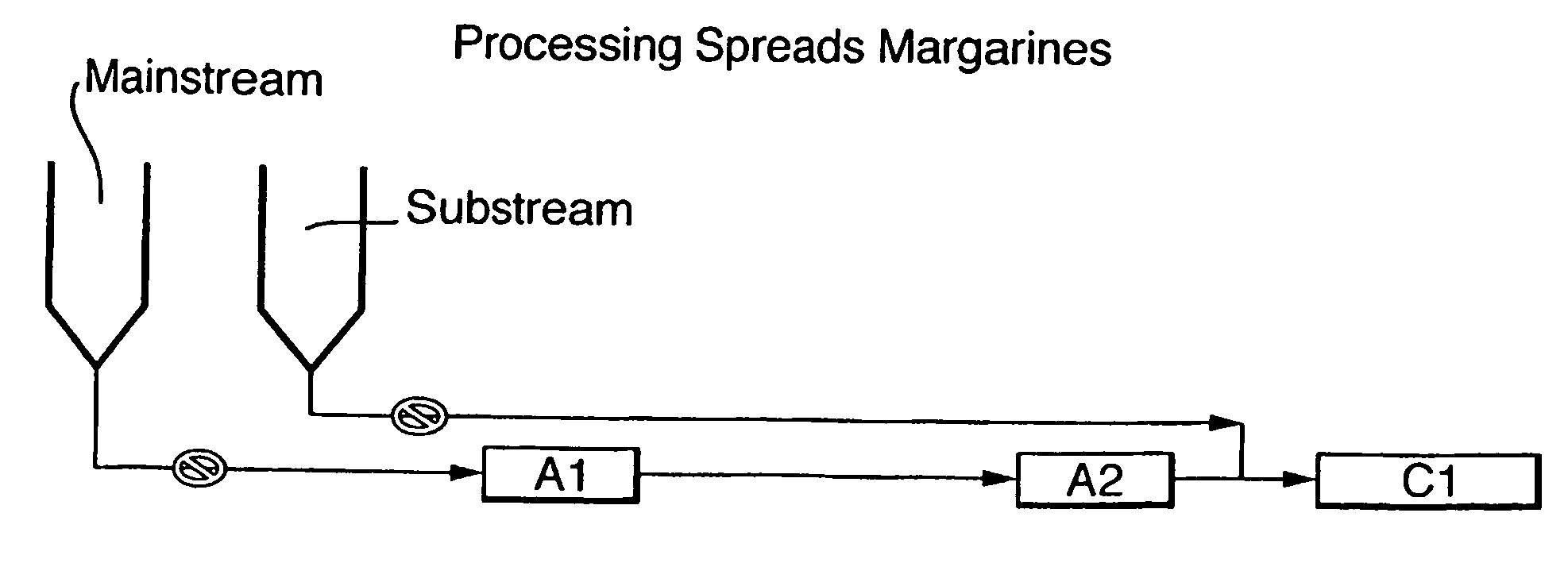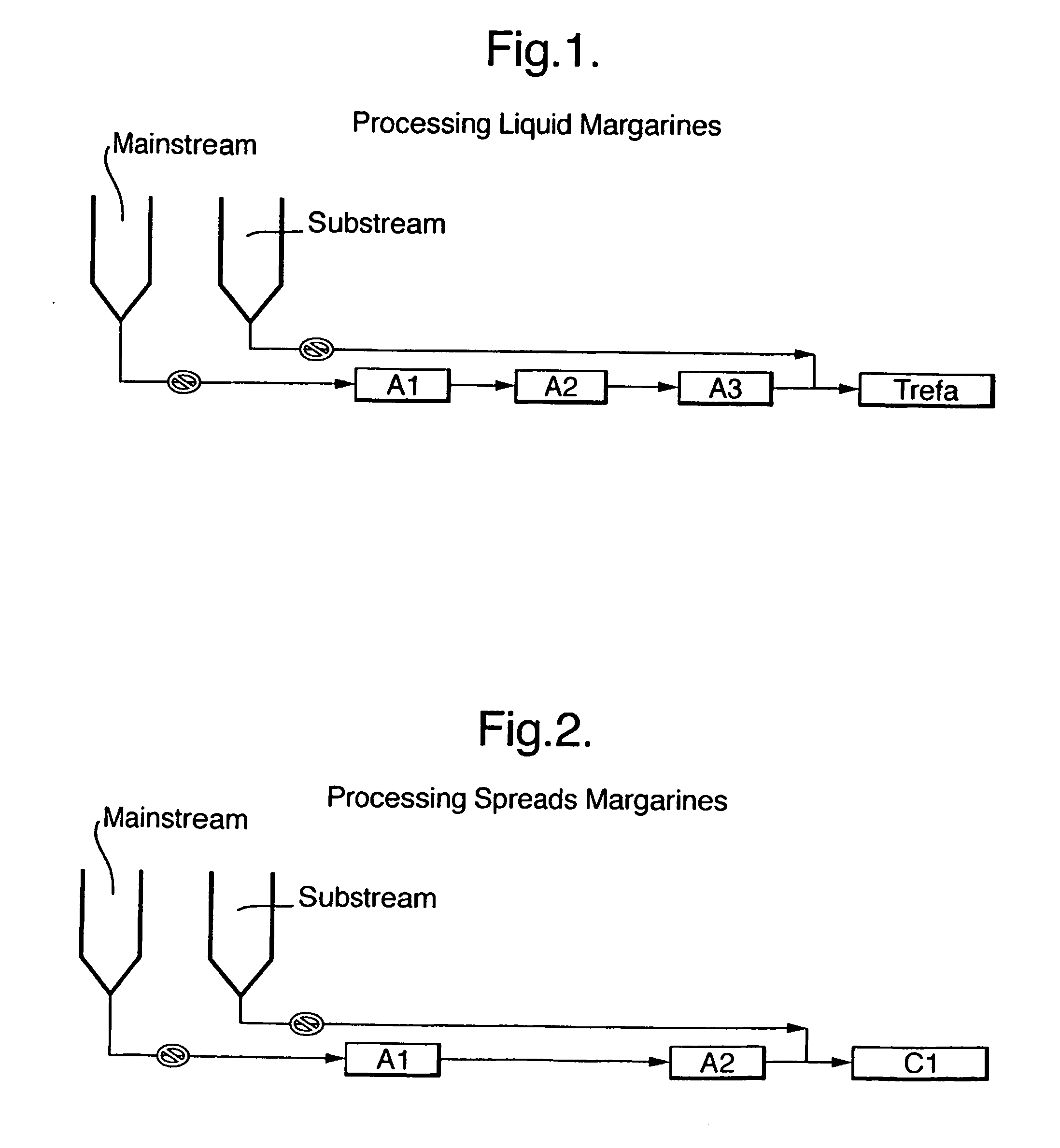Water-in-Oil Emulsion With Improved Spattering Behaviour
- Summary
- Abstract
- Description
- Claims
- Application Information
AI Technical Summary
Benefits of technology
Problems solved by technology
Method used
Image
Examples
example 1
Preparation of an Edible Water-in-Oil Emulsion
[0047]A pourable margarine was prepared with the composition shown in table 2:
TABLE 2Composition of pourable margarineIngredientAmount (wt. %)Oil phaseSunflower oil79.62RP 701.95Lecithin Bolec MT10.18Fractionated lecithin0.10Cetinol2Beta-carotene (0.4 wt. %0.15solution in sunfloweroil)Water phaseWater16.0Sodium chloride1.5Soy flour30.5Explanation of table 2:The balance of all composition to 100% is waterRP 70: Rapeseed oil hardened to a slip melting point of 70° C.1Lecithin was hydrolysed soybean lecithin (Bolec MT) obtained from UMZ (Unimills Zwijndrecht, Netherlands)2Alcohol-soluble fraction from fractionation of native soybean lecithin with alcohol; Cetinol from UMZ.3Soyflour prepared by milling Nutrisoy ® 7B (commercially available from ADM) and sieving the resulting fine powder through on a 0.5 mm sieve, the sieve fraction (
[0048]For size comparison of various samples the volume weighted mean diameter (d4,3) is measured. The volume ...
examples 2 and 3
[0051]Example 1 was repeated, but now with 0.3 wt. % (example 2) and 0.7 wt. % soy flour (example 3). The amount of water was adjusted such that the total composition remained 100 wt. %. The spattering values of the liquid margarines are given in table 3.
examples 4-6
[0052]Example 1 was repeated, but instead of adding the soy flour to the waterphase, the soy flour was added to the oil phase in amounts as indicated in table 3. The spattering values of the liquid margarines are given in table 3.
PUM
 Login to View More
Login to View More Abstract
Description
Claims
Application Information
 Login to View More
Login to View More - R&D
- Intellectual Property
- Life Sciences
- Materials
- Tech Scout
- Unparalleled Data Quality
- Higher Quality Content
- 60% Fewer Hallucinations
Browse by: Latest US Patents, China's latest patents, Technical Efficacy Thesaurus, Application Domain, Technology Topic, Popular Technical Reports.
© 2025 PatSnap. All rights reserved.Legal|Privacy policy|Modern Slavery Act Transparency Statement|Sitemap|About US| Contact US: help@patsnap.com


